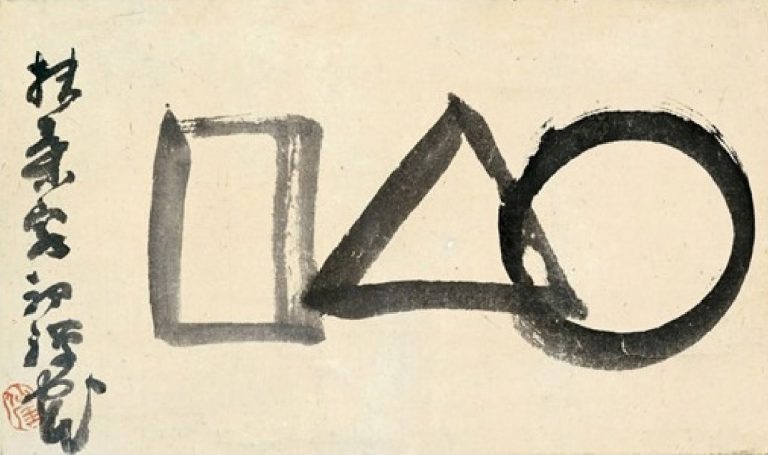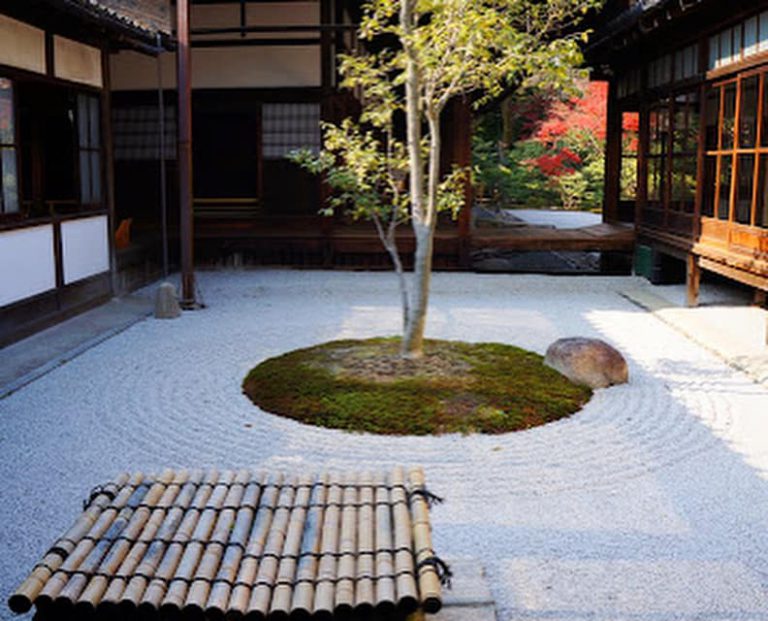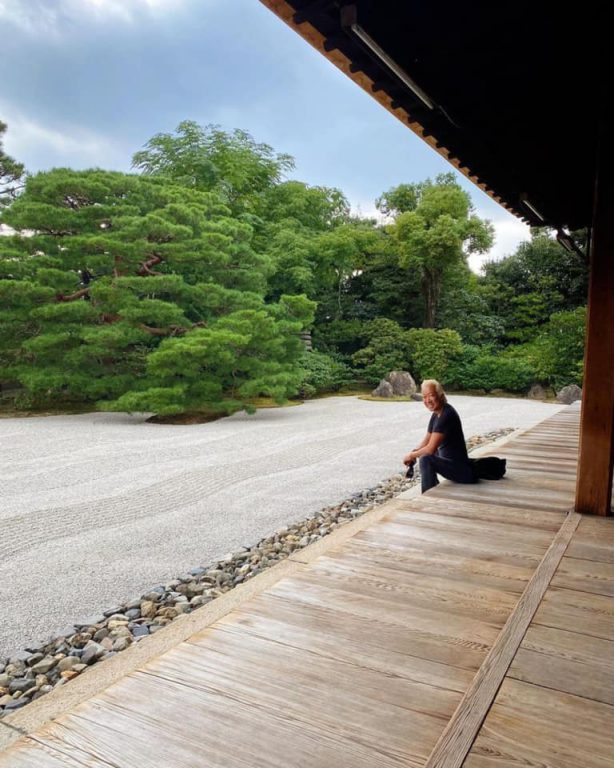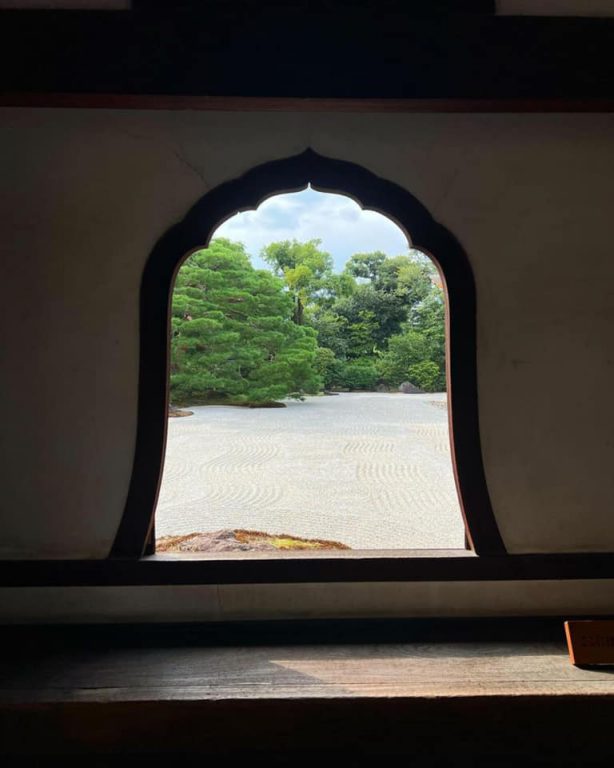Kenninji feat. Squid game? The World of Sengai Zen Paintings
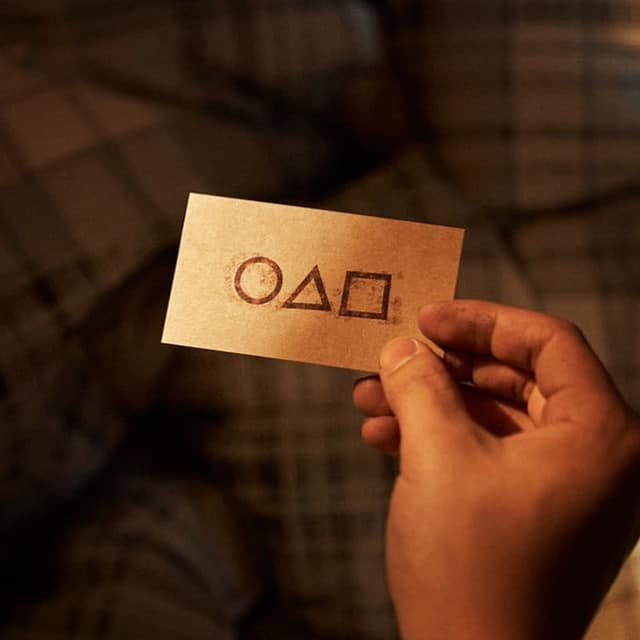
Kenninji feat. Squid game?
Kenninji temple in Kyoto has a garden named “○△□□ No Niwa”, a tie-in to Netflix’s “Squid Game”! But it was as if the source was different.
The “○ △△□□” of Kenninji Temple represents the four major philosophies of Zen Buddhism (earth, water, fire, and wind).
The square (□) well in the back is “earth” and the round (○) moss in the middle is “water. The white sand is triangular (△) and represents “fire.
And this squid-game-like calligraphy “○△△□□” was painted by Gibon Sengai (1750 – 1837, a Zen monk and painter of the Kogetsu school of Rinzai Zen Buddhism in the Edo period). It is now in the collection of Idemitsu (Idemitsu Museum of Arts).
A simple drawing with only the figures “○,” “△,” and “□. There is only an inscription on the left side of the painting, which states that it was painted by Sengai of Seifukuji Temple, the “first Zen cave in Fusang (the oldest Zen temple in Japan)”.
It is said that the “○” symbolizes the ladder of training that leads to the perfect enlightenment like the full moon, or that the “macrocosm” is condensed on a small screen by representing all of existence in the world in three figures.
On the other hand, the meaning of “○□△” on the invitation cards and staff masks in the “Squid Game” comes from the game of tag that takes place in the play.
The masked symbols on the staff represent “rank”.
Mask of “○”
The lowest ranked staff member. Their job is to identify sleeping participants and transport dropouts.
Mask of “△
Middle ranking staff. Responsible for monitoring the game and executing dropouts.
Mask of “□”
Responsible for overseeing the staff of “△” and “○”, the highest ranking staff.
It’s nice to enjoy Kyoto in autumn after knowing such a mysterious sign of history!

